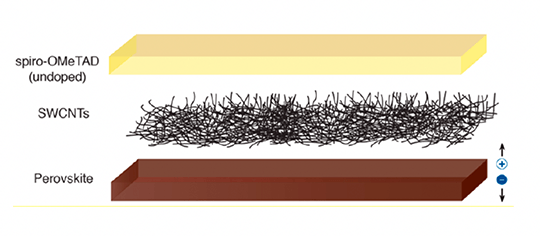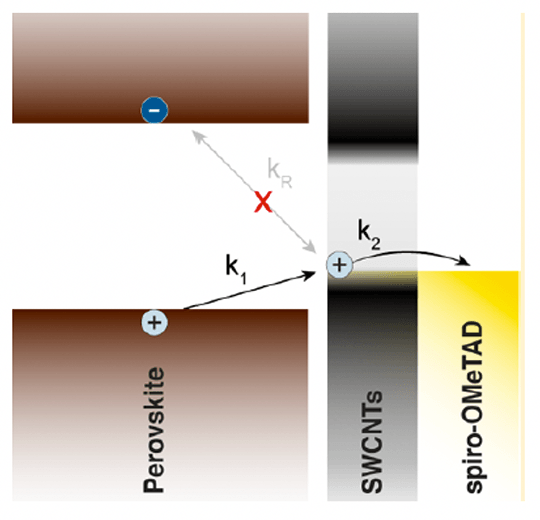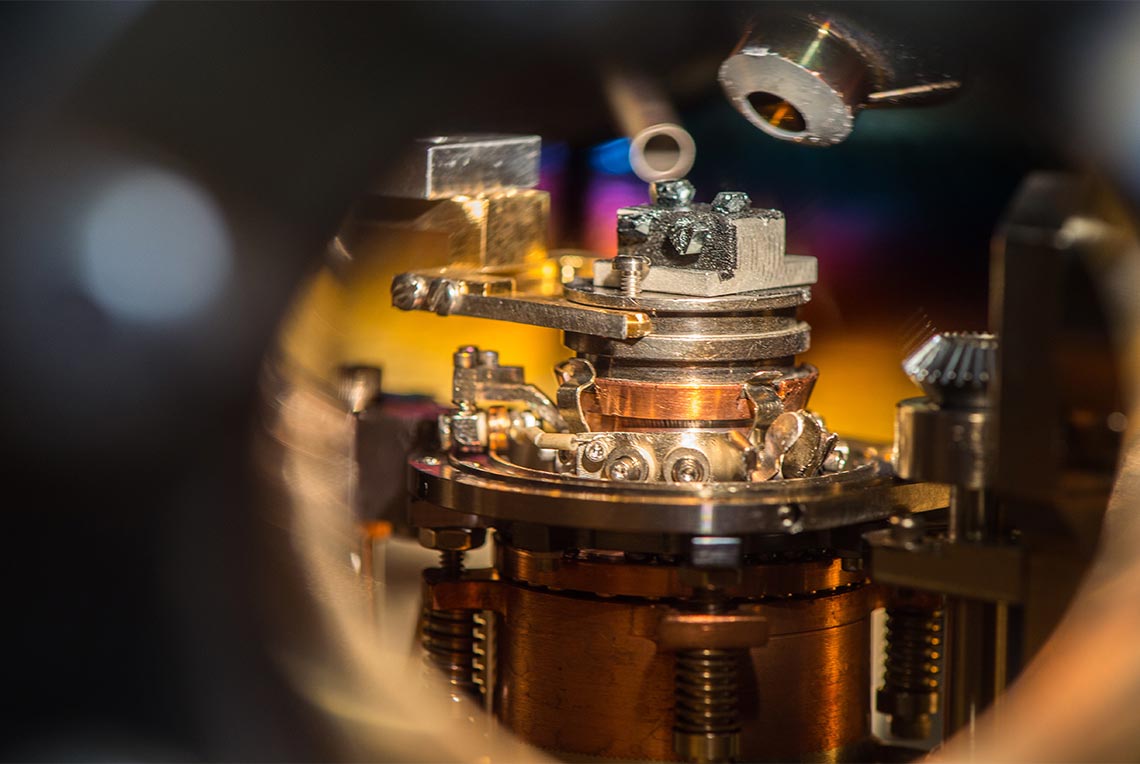Rapid Charge-Transfer Cascade through SWCNT composites Enabling Low-Voltage Losses for Perovskite Solar Cells
June 20, 2019
By comparing the charge transfer interface between single-walled carbon nanotubes (SWCNTs) and perovskite layers in multiple different configurations, we find that the charge transport characteristics of the secondary charge-collecting layer is pivotal to achieving low interfacial recombination and the resulting high VOC.
Scientific Achievement
A composite hole extraction layer of SWCNTs and undoped spiro-OMeTAD lead to exceptionally low recombination losses and one of the lowest solar cell voltage losses of any current photovoltaic (PV) technology.
Significance and Impact
Charge carrier extraction limits many perovskite opto-electronic devices. Our results suggest rapid spatial separation of charges is crucial for reducing interfacial recombination, providing a road map for designing composites where charge extraction and transport can be done in two separate layers.
Research Details
- SWCNT hole extraction layers tested in a wide variety of configurations.
- Combination of time-resolved spectroscopy measurements and steady-state photocurrent measurements.
- VOC losses in the range of best III-V devices (GaAs and GaInP) and ca. 21% efficiency solar cells.
Related People
Jeffrey Blackburn
National Renewable Energy Laboratory


Fast charge transfer cascade (k1 + k2) and very slow recombination (kR).









